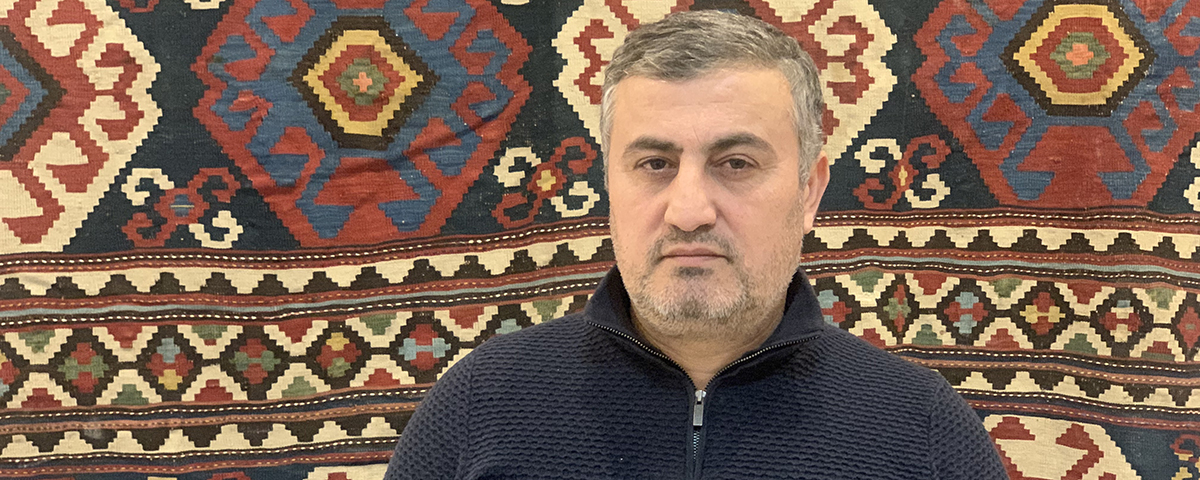© 2025 Ararat Challenge
Privacy Policy
#ArtsakhStories: The Artsakh Alphabet of Colorful Language
19.02.2021

The large and heavy carpets are hanging from high walls and pillars. They are so large and long that they take the whole wall then reach the marble floor and lie there, on the floor, bringing delight to the eye with all their natural colours: red, blue, yellow, orange. The colours turn into amazing patterns that resemble fields, mountains, roads, or even the sky... And all of them are Armenian.
These are the carpets of the Shushi Museum. Vardan Astsatryan is its founder. We walk with him through the big hall of the Museum of Architecture named after Alexander Tamanyan in Yerevan, where the carpets are exhibited.
I look left and right, and then at the floor. Carpets turn into maps with the geography of Artsakh, its blue mountains, green valleys, golden sun and colourful flowers.
We stop at one of the carpets. He begins to tell, and I… I imagine being in a poppy field, lying on the ground and looking at the starry night sky.
And I imagine myself as an artist. As if I need to colour the white paper to match what I see in the foreground, near distance and background. First, I paint big red-black flowers, then grass and a large field, and in the background – the dark night sky with small white stars.
“If you look closely on this carpet, you will see that the flowers are united by patterns and shapes, but the stars are separate and small. The flowers can be large and the stars small, but only when you look at the stars through flowers,” – Vardan teaches me the carpet’s alphabet, standing by the “Poppy Field”.
Ten years ago, Vardan opened a carpet museum in Shushi, and started to buy and collect carpets from different parts of Artsakh, all with their own unique history. He restored some of them, some did not; some were carefully sewn together, while others remained with holes.
On November 1 last year, Vardan managed to remove better part of the carpets from the already deserted town of Shushi. He and his friends could not work during the daytime – drones could have noticed them. But they managed to get down to business after dark. The next day carpets were brought to Yerevan and deposited in the Historical Museum of Armenia.
“In terms of quantity, we managed to take out 2/3 of the carpets, but in terms of quality – 90%,” – says Vardan, while fixing one of the hanging carpets.
More than 60 carpets are now in the large hall of the Museum of Architecture. They are hung or spread out on the floor, staring at us with their ornaments.
Carpets love human eyes; you need to look at them so that they’d live. Without that, they may fade, shrink, take offense and… maybe leave?
The organizers did not want to call the exhibition “Rescued Carpets”. They agreed that the museum is located in Shushi, where the carpets have their own home. They came to Yerevan for the time being. Then they will return back home…
Ani Minasyan
Photo Credit Mark Grigoryan - Vardan Astsatryan with “Tsaghkagorg” in the background; Yerevan, Armenia/February, 2021




